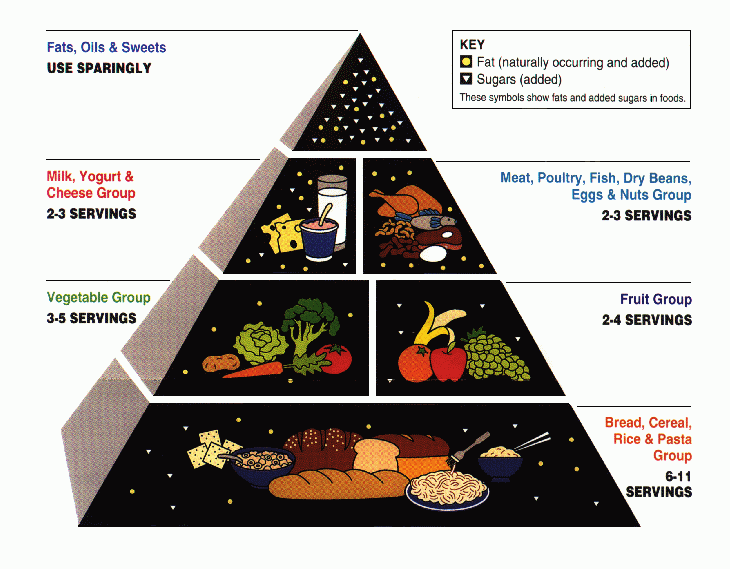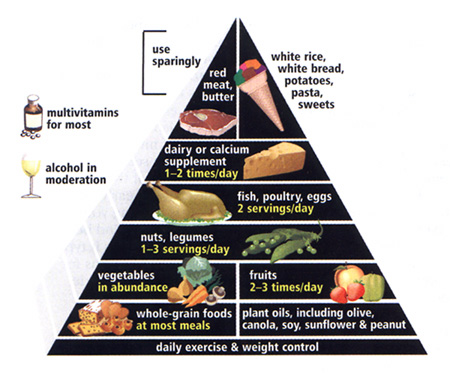DRAKE
and
DRAKE
Saunders Pharmaceutical Word Book
| “I’m from the government, and I’m here to help you.” by Randy Drake
The United States Department of Agriculture (USDA)
released its first “Food Pyramid” in 1946. The current
version (below) was released in 1992 and called for the daily consumption
of 6-11 servings of starches (bread, cereal, rice, and pasta) and
2-3 daily servings of high protein foods (beef, poultry, eggs, fish).
But look again at the graphic. What do the products listed in the bottom two “tiers” of the pyramid have in common? What do the products listed in the top “tiers” have in common? It should come as no surprise that the U.S. Department of Agriculture claims that everyone should consume more agricultural products and less animal products. The U.S. Rice Federation and other agricultural organizations are pleased to have their very own government department looking out for their best interest. But is the USDA food pyramid in our best interest? Unfortunately, what’s good for people who sell the food is not necessarily good for people who eat the food! The scientifically unfounded recommendations put forth by our government leads to excess weight, poor health, and early death. More than two decades before the 1992 release of this pyramid it was known that consumption of excess carbohydrates is the main cause of obesity and type 2 diabetes. (Dr. Atkins’ research was first published in 1970.) Obviously, the U.S. Department of Agriculture is not responsible for promoting human health. So why hasn’t the food pyramid been designed by the government departments that are responsible for promoting health, such as the Department of Health and Human Services or the National Institutes of Health? Or, at the very least, why haven’t those departments sounded the alarm about the health-destroying nature of eating the way the USDA recommends? We can only speculate. In the face of growing criticism, the USDA is “re-evaluating” their food pyramid. Fortunately, there is also a growing recognition that the food pyramid needs to be redesigned by an organization with less conflict of interest. Several proposed changes exist, but one of the most thoroughly researched and documented designs is from two professors at the Harvard School of Public Health. Those professors, Walter C. Willett and Meir J. Stampfe, have designed their food pyramid based upon over 20 years of nutrition research. Their recommendations, presented graphically below, were published in the Journal of Clinical Nutrition (Dec. 2002) and Scientific American (Jan. 2003).
“Let thy food be thy medicine.” — Hippocrates (Source:
Harvard School of Public Health) |

